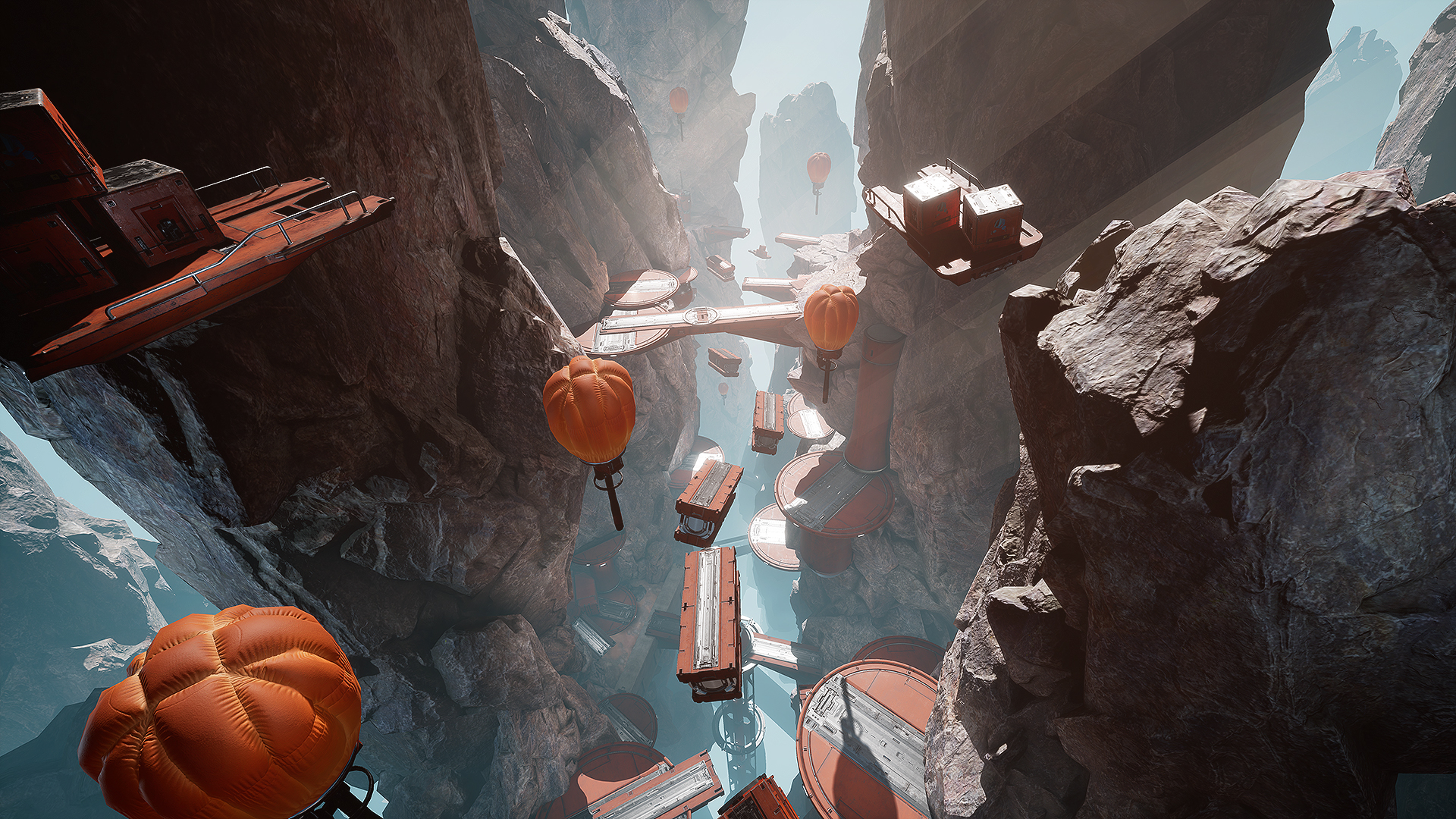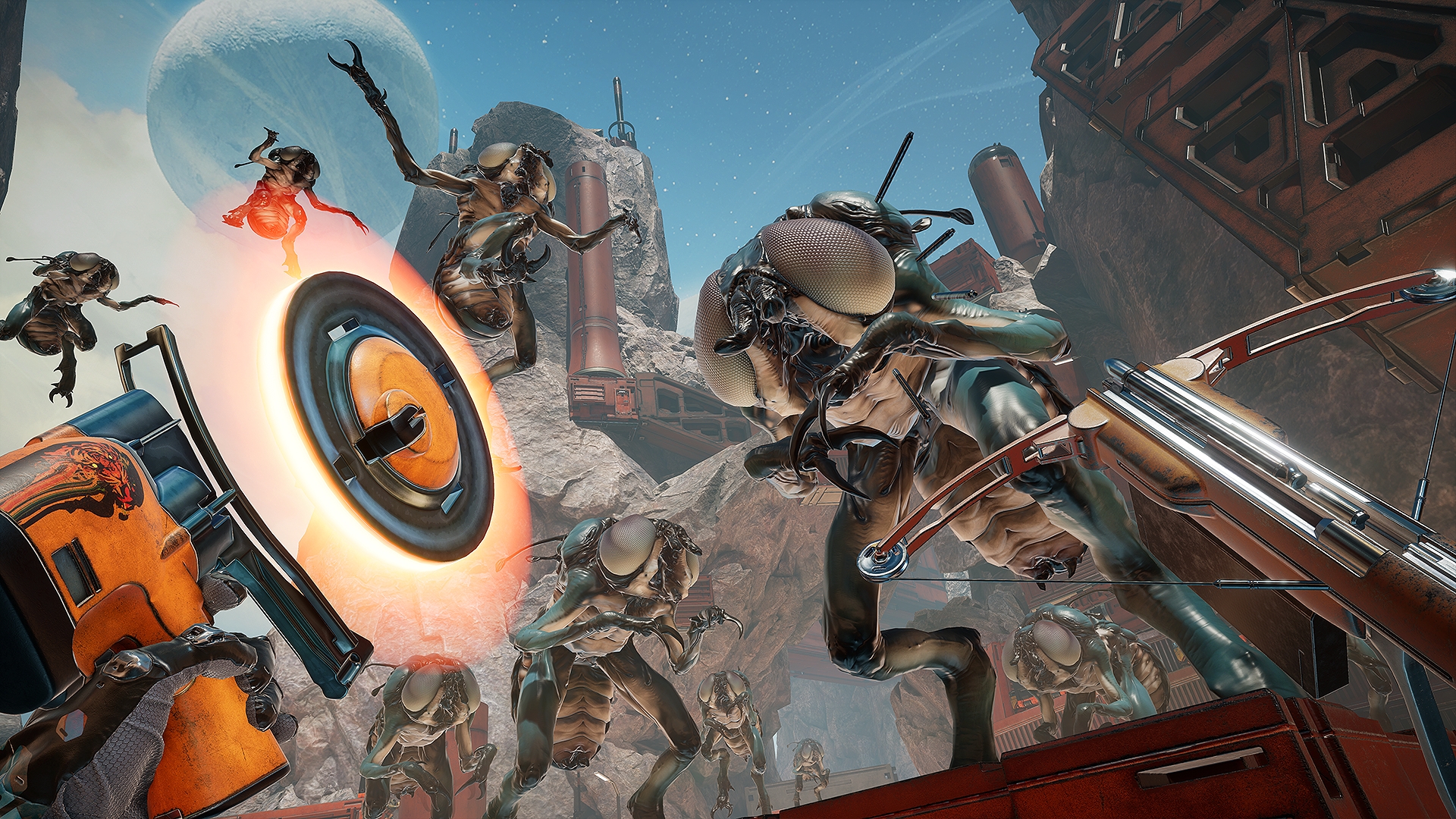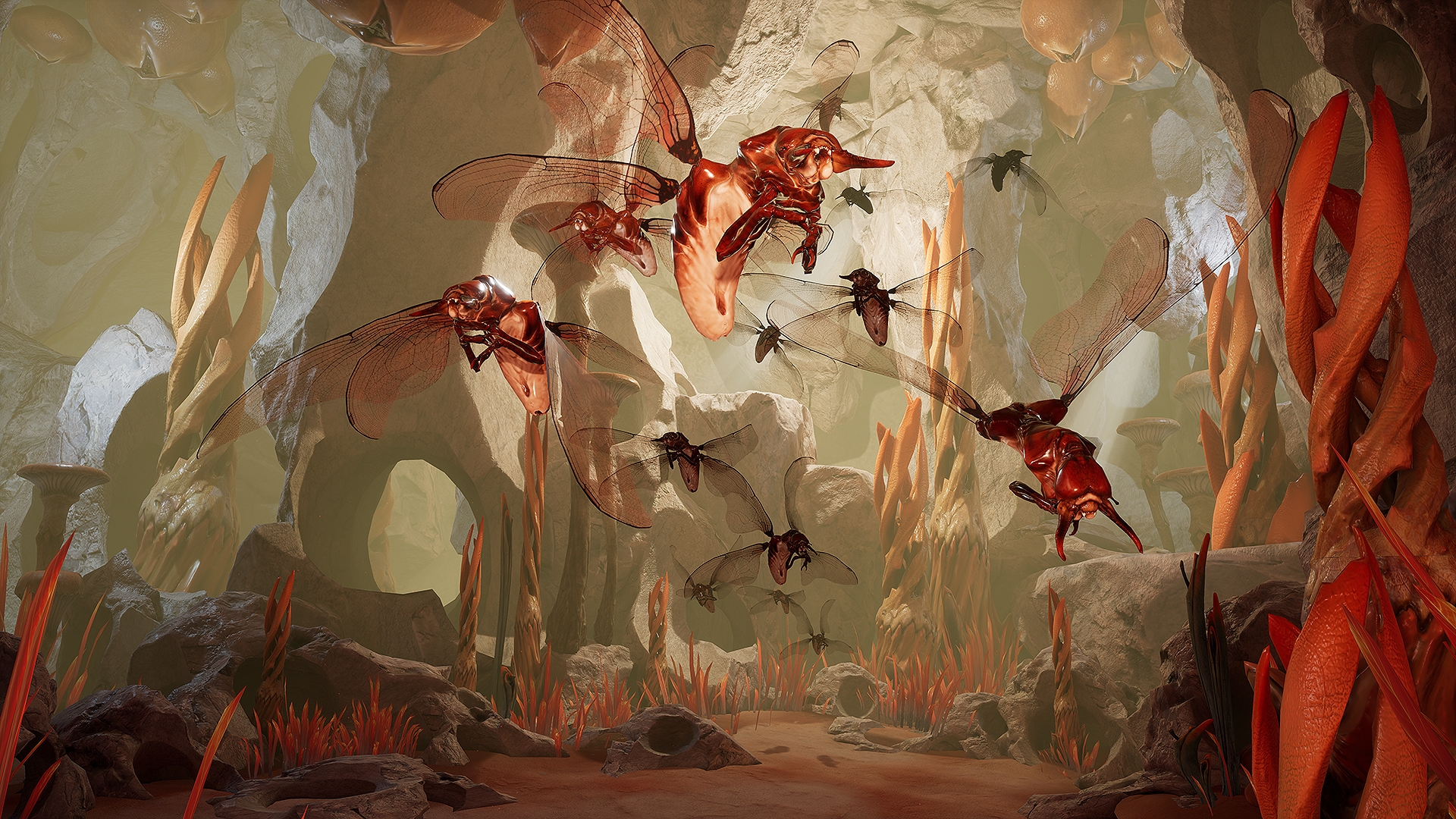"Is teleportation a crutch?" is one of the biggest questions dominating the early days of VR. As developers try to 'solve' the problem of movement in VR FPSes, we've seen a few answers emerge: restricting the player to their real-life play space in wave shooters, letting you blink around the environment like Tracer, or even subjecting players to the, for some, stomach-turning sensation of full motion. Teleportation may be the most common, though it usually has a hint of "well, I guess this will have to do" behind it. But the newly announced co-op FPS Gunheart embraces its teleportation with open, gun-toting arms.
Gunheart is the first game from Drifter Entertainment, a VR-focused studio founded by developers who've worked on Robo Recall, Gears of War, the Halo franchise, and more. It's a co-op sci-fi shooter for three players where you hang out in a space bar before setting out on 10-15 minute missions, unlocking and upgrading weapons as you progress further in the campaign. I got my hands on it last week and got to fight grotesque alien bug people that sort of reminded me of the Prawns from District 9. My arsenal for killing them included an SMG with slight auto-lock, a hand crossbow with guideable bolts, and a big ol' laser bow.

Drifter told me it didn't want to hide behind teleportation, instead choosing to embrace it as the cool super power that it would be in real life. So while there's a 15 meter distance limit, there's no cooldown at all, meaning I could zip across the map at breakneck speeds if I wanted to. Alternatively, I could fire with my left hand while blindly strafing in short jumps with my right hand, shooting enemies while moving too fast for them to retaliate. It's a teleport mechanic that felt empowering instead of just being about repositioning.
The influence of games like Halo or Destiny can definitely be felt in Gunheart's level design. The mission I played had me and two of the developers walk down a linear path, stopping to fight in a series of wide, sprawling arenas as we went. It doesn't feel like Left 4 Dead, where you rarely backtrack—enemies will get around and behind you in each arena, and I frequently fought ahead only to have to turn around and fight back the way I came. The result is a VR shooter campaign that feels more like that of Doom or Halo than any I've played before.
The level I played also used height in interesting ways, with large crates and shipping containers scattered around the map. The teleporter is tuned to make scampering up these obstacles quick and intuitive, and they were fun to use as both a place to hide and a method of getting around the enemy’s cover. But while the layouts were interesting to explore, the level's art direction itself was pretty bland. Don't get me wrong, it's a beautiful game, but the floating sci-fi rocks with sci-fi metal boxes didn't really provide a unique voice for Gunheart.

Another weak point of my initial demo was the general lack of 'oomph' from my weaponry. While there will be more weapons to choose from and unlock in the full game, I wasn't a fan of any of the guns I used in my demo. The SMG in my right hand had a strange bit of auto-lock to it that felt sort of cheaty in VR, while the crossbow in my left hand allowed me to guide the bolt (poorly) if I held down the trigger.
My final weapon was a two-handed laser bow I could cleverly summon by bringing my hands together, but the feedback for hitting an enemy with any of these weapons was lacking to say the least. The bow was slow to fire and I'd hoped hard hitting, but the bug-eyed (literally) enemies could take a laser bolt to the body without much to indicate I'd even landed the shot. Couple that limited response with enemies who didn't take too much to kill and the combat felt rather simple.
Keep up to date with the most important stories and the best deals, as picked by the PC Gamer team.

But Gunheart is doing some interesting things with the co-op aspects of its shooting that I didn't really get a chance to explore. Each character class has a special perk—mine was an aura that would slow bullets around me—that you can share with teammates if they are nearby, making positioning and teamwork important. Drifter told me later that I probably should have started me on the Hard difficulty setting (there's another difficulty level above Hard as well), and I think an increased challenge and better guns could make everything about Gunheart's combat more satisfying.
How many guns there are and what the other mission types are like are big questions left to be answered. The developer wants this to feel like a full game with lots of content when it launches later this year, but it remains to be seen what that actually means. The social aspect of diving into some shorter co-op VR missions with friends is an appealing one, and what I played of Gunheart seems like a solid foundation for that experience. It's a game I'm excited to play more of, and one that will likely appeal to those looking for a VR shooter that's not as restricted by tight paths and timed teleports.



